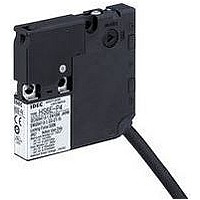HS6E-M44B03-G IDEC, HS6E-M44B03-G Datasheet - Page 14

HS6E-M44B03-G
Manufacturer Part Number
HS6E-M44B03-G
Description
SWITCH, SAFETY INTERLOCK, 2NC, 2A
Manufacturer
IDEC
Series
HS6Er
Datasheet
1.HS6E-L44B03-G.pdf
(20 pages)
Specifications of HS6E-M44B03-G
Contact Voltage Ac Max
125V
Contact Voltage Dc Max
30V
Contact Current Ac Max
2A
Contact Current Dc Max
2A
Switch Terminals
Cable
Contact Configuration
SPST-NC / SPST-NC
Rohs Compliant
Yes
Lead Free Status / RoHS Status
Lead free / RoHS Compliant
HS6E Subminiature Interlock Switches with Solenoid
When using the HS9Z-A65/HS9Z-A66 Angle Adjustable
Actuator
• When the door hinge is on the extension line of the interlock
• When the door hinge is on the extension line of the actuator
Actuator Angle Adjustment for the HS9Z-A65/HS9Z-A66
• Using the angle adjustment screw, the actuator angle can be
• The larger the adjusted angle of the actuator, the smaller the
• After installing the actuator, open the door. Then adjust the
• After adjusting the actuator angle, apply Loctite to the
Mounting Examples
Note: When mounting an actuator, make sure
14
HS9Z-A66
HS9Z-A65
Application on Sliding Doors
Horizontal Adjustment
Horizontal Adjustment
switch surface
mounting surface
adjusted (see figures on page 10).
Adjustable angle: 0 to 20°
applicable radius of the door opening.
actuator so that its edge can enter properly into the actuator
entry slot of the interlock switch.
adjustment screw so that the screw will not become loose.
HS9Z-A65
HS9Z-A66
that the actuator enters the slot in the
correct direction, as shown on the right.
Door Hinge
Door Hinge
Door Hinge
Door Hinge
HS6E
Interlock Switch
HS9Z-A61 Actuator
Door Stop
Latch
Door
HS9Z-A65
HS9Z-A66
Vertical Adjustment
HS9Z-A65
Vertical Adjustment
HS9Z-A66
Application on Hinged Doors
HS9Z-A62S Actuator
Door Hinge
Door Hinge
Door Hinge
Door Hinge
Label
Label
For Manual Unlocking
Spring lock type
The HS6E allows manual unlocking of the actuator to pre-check
proper door operation before wiring or turning power on, as well as
for emergency use such as a power failure.
Solenoid lock type
The HS6E can be unlocked manually in emergency.
When using the manual unlock key
• When locking or unlocking the interlock switch manually, turn
• Using the interlock switch with the key not fully turned (less
• Do not apply excessive force (0.45 N·m or more) to the
• Do not leave the manual unlocking key attached to the switch
When unlocking pushing the plate inside the interlock switch
• Remove the screw at the side of the interlock switch (the same
• Push the plate inside the interlock switch toward the LED
• Tighten the screw to a proper torque (0.3 to 0.5 N·m). Do not
Caution
Before manually unlocking the interlock switch, make sure
that the machine has come to a complete stop. Manual
unlocking during operation may unlock the interlock switch
before the machine stops, and the function of the interlock
switch with solenoid is lost. While the solenoid is energized,
do not unlock the switch manually (solenoid lock type).
the key fully using the manual unlocking key supplied with the
switch.
than 90°) may cause damage to the switch or operation
failures (when manually unlocked, the switch will keep the
main circuit disconnected and the door unlocked).
manual unlock part, otherwise the manual unlock part will
become damaged.
during operation. This is dangerous because the switch can
always be unlocked while the machine is in operation.
side where actuator is inserted) and insert a small screwdriver.
indicator using the screwdriver until the actuator is unlocked.
tighten with excessive force, otherwise the interlock switch will
be damaged. Be sure to reinstall the screw, otherwise the
waterproof capability will be lost.
Screwdriver
UNLOCK
(installed on both sides)
Manual Unlocking
Normal Position
Manual Unlock Key
(supplied with the switch)
Manual Unlocking
Position
(07/03/12)













